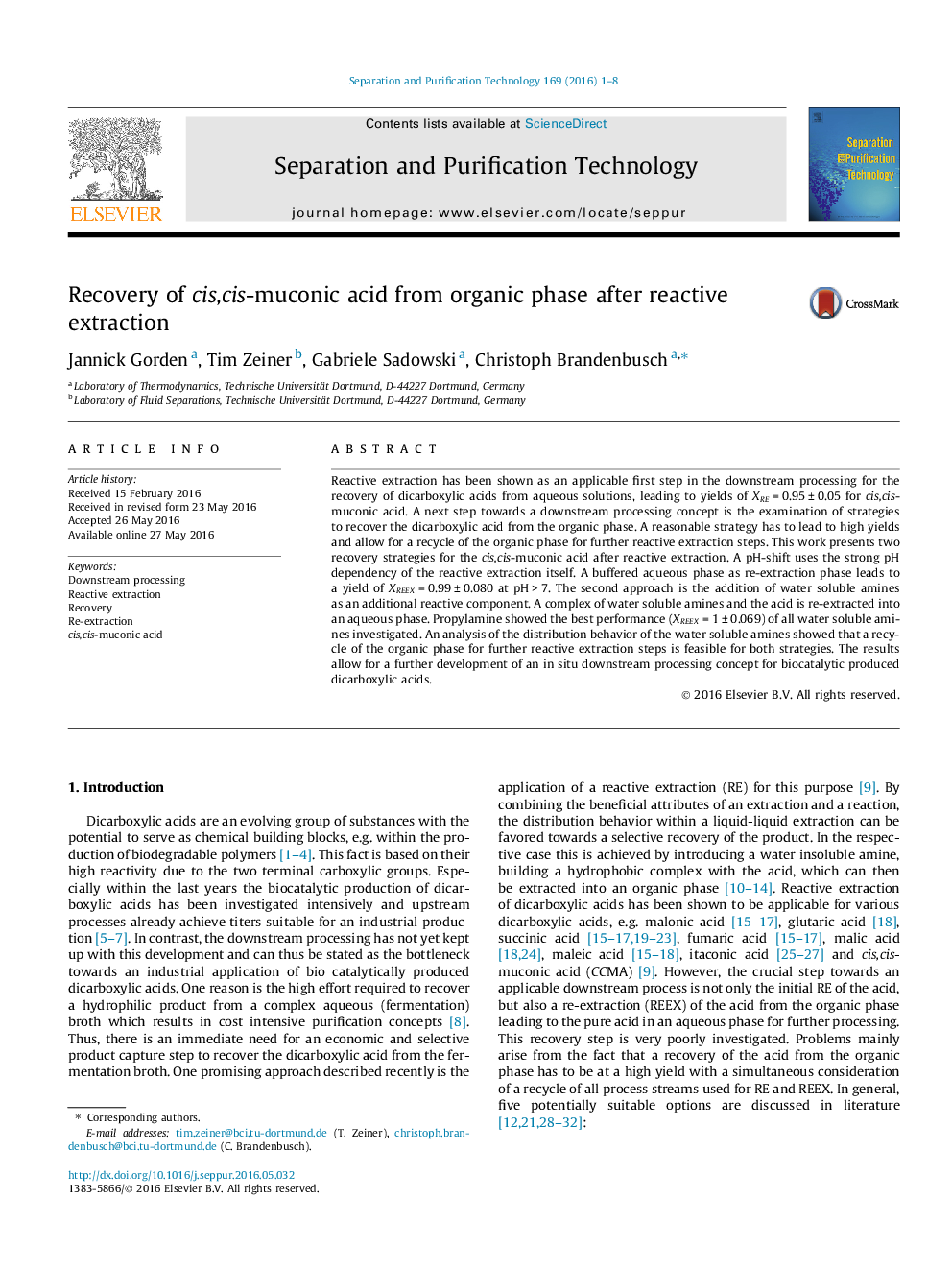| Article ID | Journal | Published Year | Pages | File Type |
|---|---|---|---|---|
| 639870 | Separation and Purification Technology | 2016 | 8 Pages |
•Re-extraction of dicarboxylic acid previously extracted by RE using amines.•Re-extraction strategies include a pH-shift and the addition of a water soluble amine.•Complete recovery of the dicarboxylic acid is achieved.•Recycle of the extraction phases is enabled.•A complete biocompatible DSP concept for dicarboxylic acids is proposed.
Reactive extraction has been shown as an applicable first step in the downstream processing for the recovery of dicarboxylic acids from aqueous solutions, leading to yields of XREXRE = 0.95 ± 0.05 for cis,cis-muconic acid. A next step towards a downstream processing concept is the examination of strategies to recover the dicarboxylic acid from the organic phase. A reasonable strategy has to lead to high yields and allow for a recycle of the organic phase for further reactive extraction steps. This work presents two recovery strategies for the cis,cis -muconic acid after reactive extraction. A pH-shift uses the strong pH dependency of the reactive extraction itself. A buffered aqueous phase as re-extraction phase leads to a yield of XREEXXREEX = 0.99 ± 0.080 at pH > 7. The second approach is the addition of water soluble amines as an additional reactive component. A complex of water soluble amines and the acid is re-extracted into an aqueous phase. Propylamine showed the best performance (XREEXXREEX = 1 ± 0.069) of all water soluble amines investigated. An analysis of the distribution behavior of the water soluble amines showed that a recycle of the organic phase for further reactive extraction steps is feasible for both strategies. The results allow for a further development of an in situ downstream processing concept for biocatalytic produced dicarboxylic acids.
